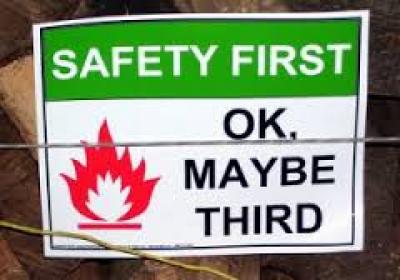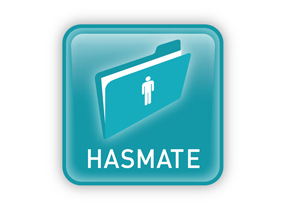Last week I was asked to visit a small company that manufactured and installed kitchen bench tops and to discuss their future health and safety (H&S) requirements.Napier, 5 May 2016 - The company had been in business for eight years, they operated out of an old orchard pack house, had a very good reputation in the building industry and were very busy. The company had three employees.
No H&S systems were available. Like so many SMEs I visit, the business owner had very few management systems in place.
In the owners opinion H&S was a dirty word but he was now receiving many enquiries from his key clients stating if he wanted to continue to supply them and to work on their building sites he would have to have his H&S systems into place. His insurance broker had also asked him to address the issue.
After getting over the initial introductions and hearing his opinion that H&S was all B-S and nothing more than common sense and that he had never had an accident, we got down to business of identifying what and how he made bench tops.
It was during my observations that I noticed an employee approach the glue spraying booth, pick up a respirator off the work bench, put in on and then proceeded to spray the adhesive onto the laminate.When I asked the business owner if that was the normal process he nodded and then proceeded to tell me they have always done it that way and in my opinion was anything wrong with the way they did the spraying.
Here’s how the discussion went:Q - How often is the spray booth used during the day?A - Continually by all the staff, including myself
Q - Where is the extraction system turned on and by whom?A - We don’t have one as it’s too expensive to install.Q- Do you carry out annual medical checks for your employees?A- No why should we, do we have to?
I then proceeded to explain why this has to happen and especially with the type of exposure that he and his employees have to highly toxic solvent based glues.I then asked him if he had trained his staff in the safe use and application of the glues according to the Glues material safety data sheet. (MSDSA- What’s an MSDS?
Another explanation followed.
At this stage I picked up the respirator that was laying on the workbench and asked.Q- Do all the employees use this respirator?A- Yes, what’s the problem with that, they only use for a few minutes at a time?
I then proceeded to fold back the Latex face mask and showed him the sweat, spittle, MDF dust and other nasties trapped inside the mask.Q- Do you also use this?A- There was a stunned silence for a few moments and then he said shaking his head, not any longer.
He then said, I see what you mean but the cost of buying a respirator for each employee would be expensive, I can’t afford to do this.A- You can’t afford not to.
Q- What do you mean?A- If one of your employees was to come to work with the flu or a chest infection or worse and he, as well as all the other staff used the respirator, then there was a very high risk of all the staff and yourself contracting the flu resulting in all of you being off work for 3-5 days.
Q- What financial impact would that have on your business lest alone your clients and your business reputation?In addition, you also have a legal obligation under the Health and Safety at work Act to manage and to monitor the health and safety of your employees.
Q- How often do you clean the respirator or change the filters?A- Never, I have never really thought about it. It sounds like I really do have an H&S issue, how do I fix it?
DOES THIS SOUND FAMILIAR? If it does then here’s an action plan
1. Ask your glue supplier to send you the latest copy of the MSD sheet for the glue. 2. Discuss the MSD information with your employees, especially the use of PPE and the emergency procedures. 3. Have an extraction system installed in the spray booth to remove any surplus glue spray in a controlled manner. 4. Consult with a specialist supplier and purchase a respirator for each employee. 5. Ask the supplier to train your employees in the safe use, cleaning and the replacement of the filters 6. Purchase four plastic Click Clack containers , put their names on them and mount them on the wall near the spray booth 7. When not in use, the respirators must be • Cleaned after use and or on a weekly basis with sanitizing wipes. • Placed in a zip lock plastic bag • Stored in a snap lock plastic container. • Depending on the type of filters used, they can work 24/7 when exposed to the air. Read the manufactures instructions. • Change the filters on a scheduled basis.
And lastly, I recommended that YOU identify and engage a qualified Occupational health nurse to undertake the health monitoring assessments for yourself and your employees.
Gordon Anderson is the managing director of Hasmate Ltd of Napier. Since 1993 he has worked extensively in the area of health and safety as an adviser, systems development, auditing and management training. He works with a wide range of industries in Hawke's Bay and in other centres.


